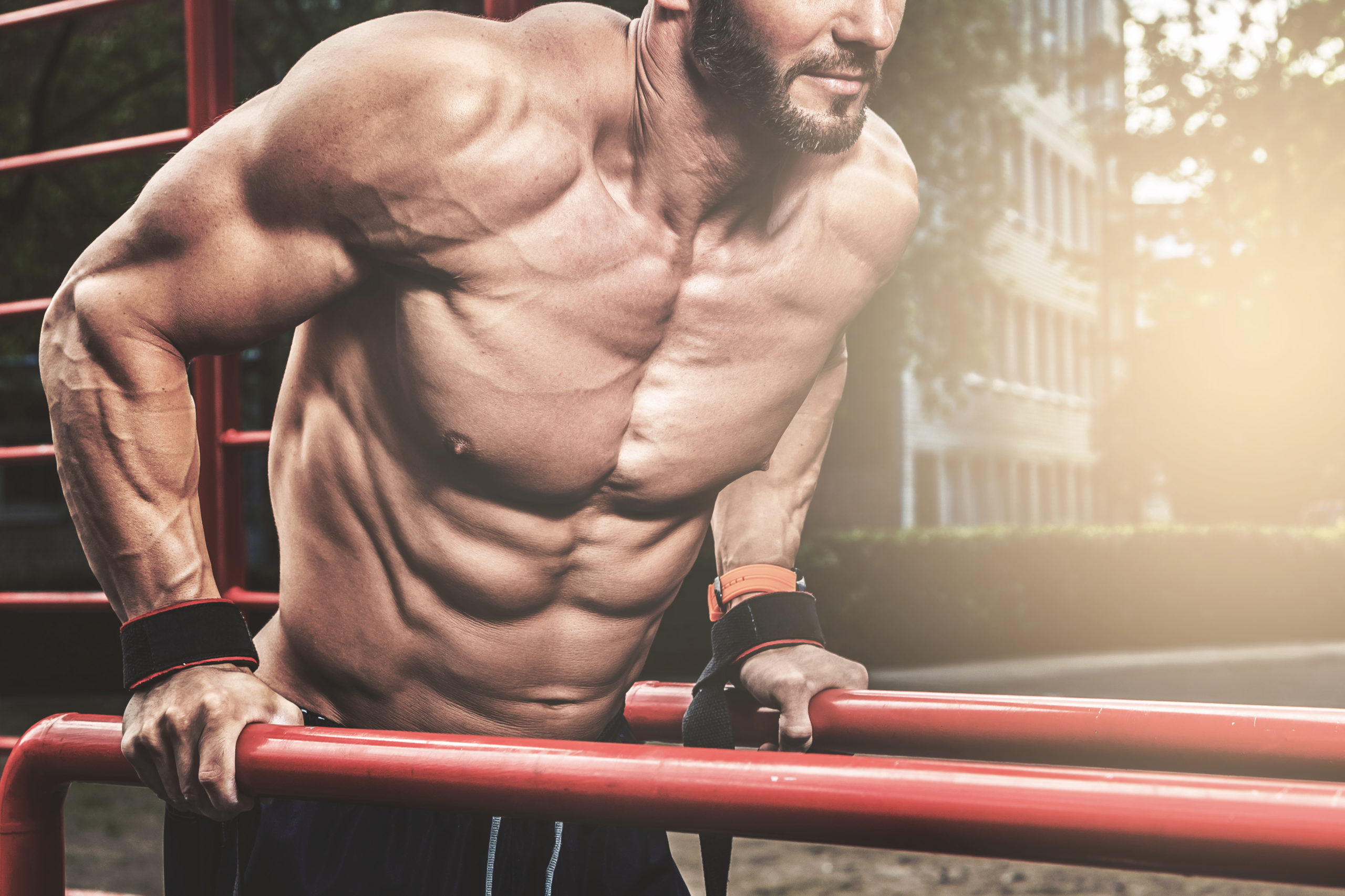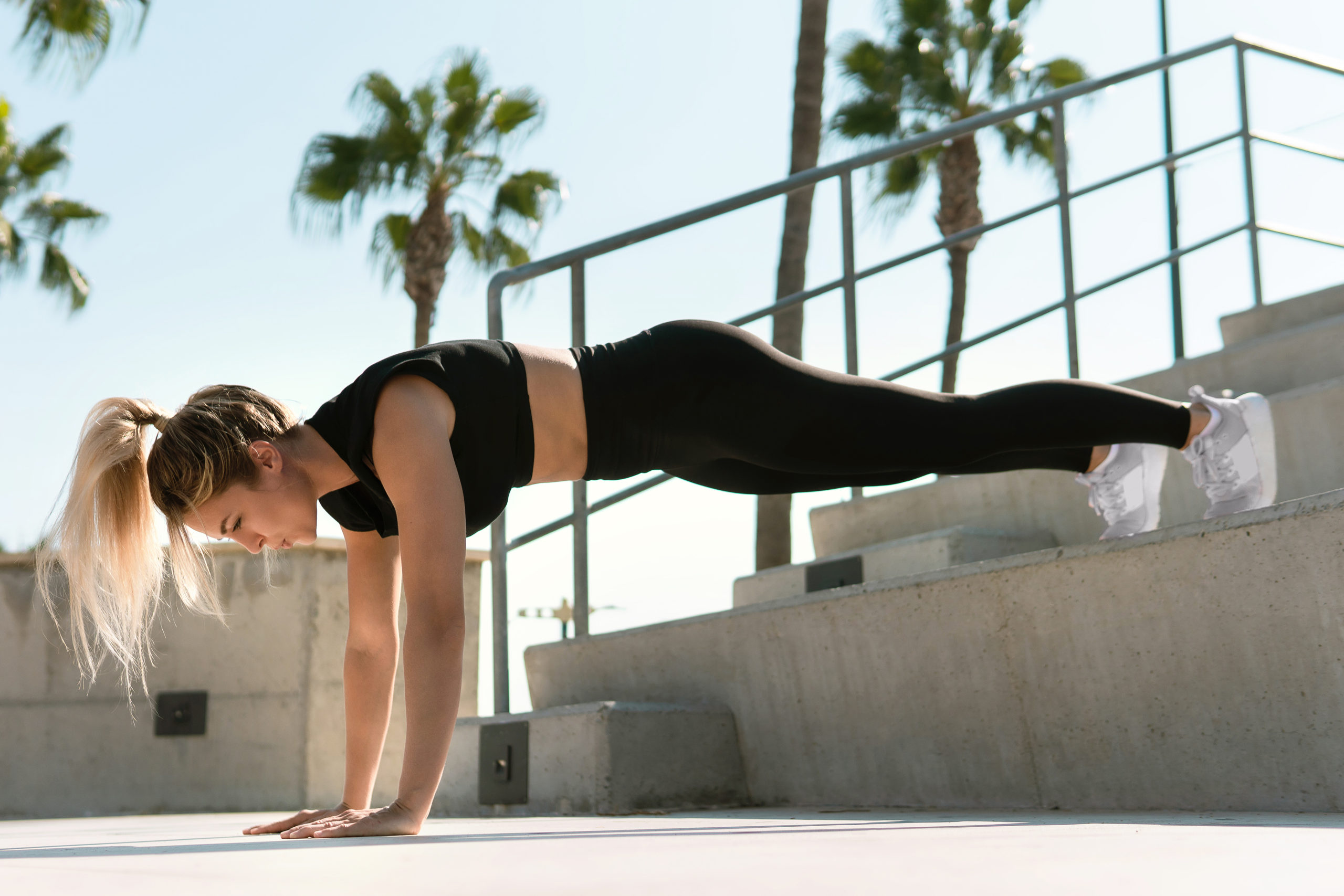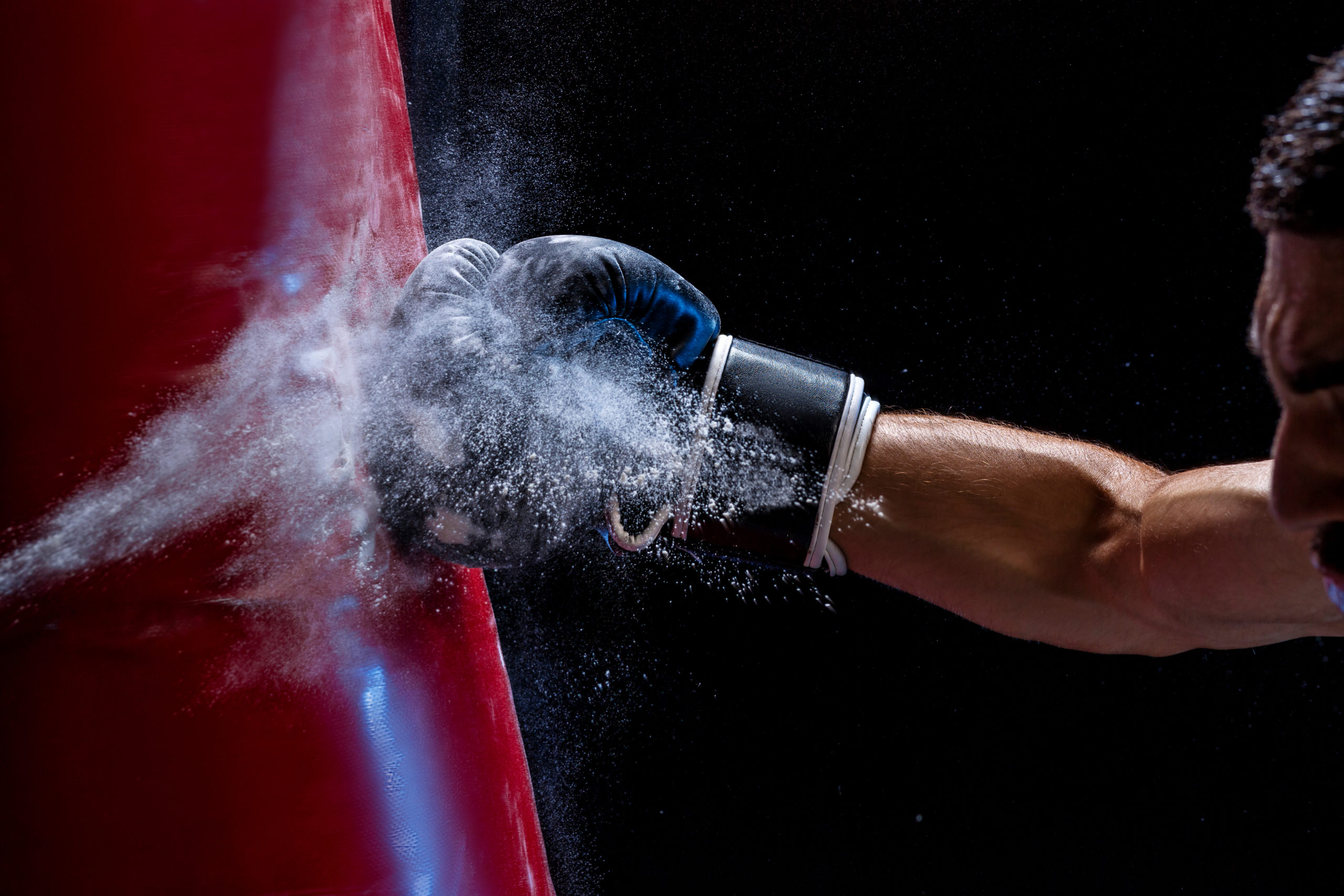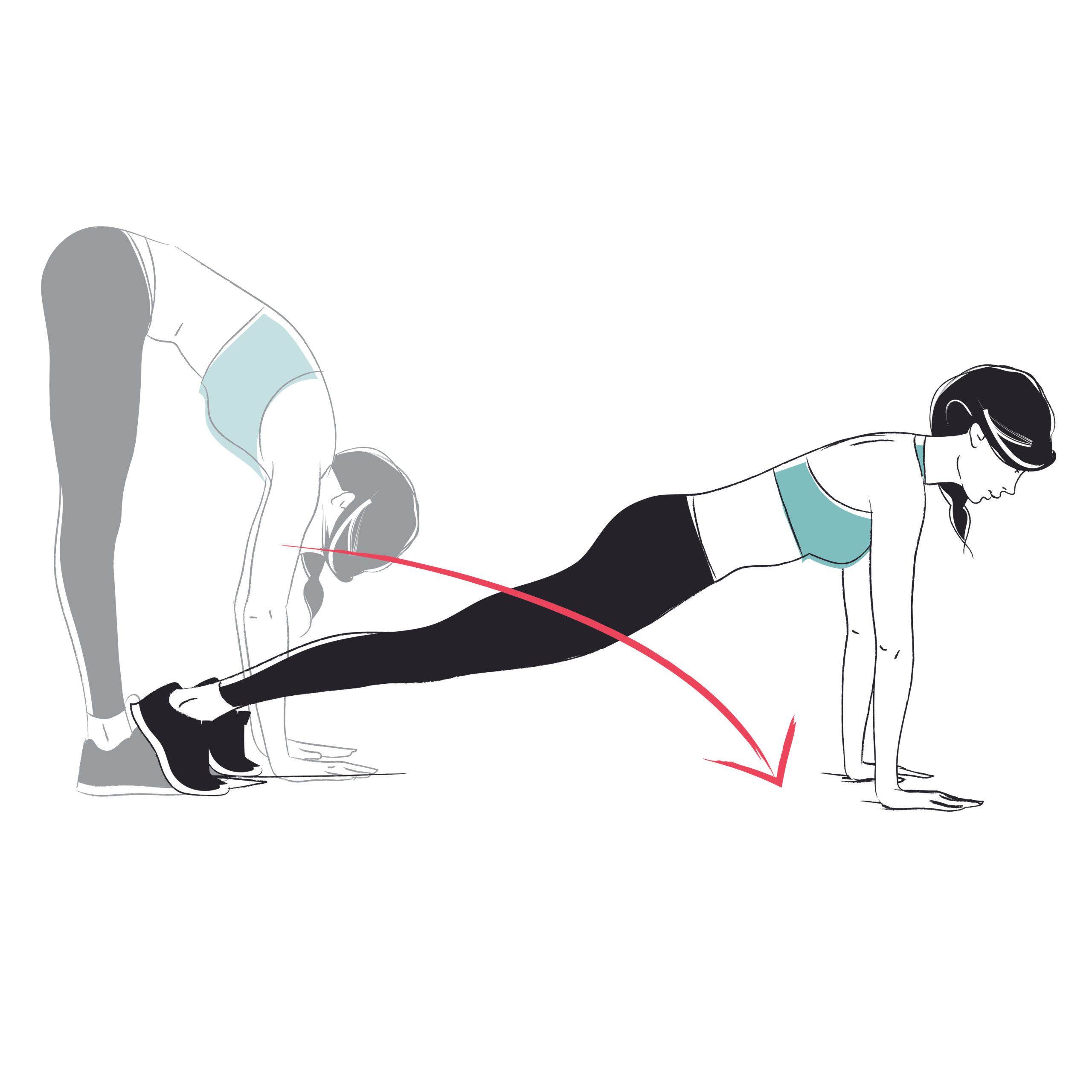
Calisthenic chest workouts are ideal when you are searching for a workout variation, at-home workout options, or if you have limited access to strength training equipment.
Calisthenics are exercises that use your body weight as resistance instead of the weight from dumbbells, barbells or weight plates. Design the best calisthenics chest workout for your fitness goals whether they are to improve strength, increase muscular endurance or enhance your muscle tone.
Are Pecs the Chest Muscles?
Often referred to as the pecs, the muscles that make up the chest include the pectoralis major, pectoralis minor, and serrates anterior. The chest muscles are located on the upper portion of the torso and allow for a variety of arm movements including pushing, lifting, and raising and lowering the arms. A calisthenic chest workout focuses on these three muscle groups, which work together during strength-training exercises.
When designing a chest workout, consider the location of the muscles, where they attach to the body, and what they require to obtain strength gains.
Pectoralis Major
The medical database, StatPearls (2021), describes the pectoralis major as a fan-shaped, thick muscle that connects from the sternum, or chest bone, to the upper arm bone. It is the largest of the chest muscles and can be felt underneath the breast.
Pectoralis Minor
The pectoralis minor is thinner than the pectoralis major and lies underneath it. The pectoralis minor connects the middle of the rib cage to the front of the shoulder and is essential in maintaining a stable shoulder. For instance, during chest calisthenic exercises, the pectoralis minor maintains a strong, stable shoulder for smooth movements.
Serratus Anterior
The serrates anterior is typically known for the way it resembles a serrated knife’s edge. The serrates anterior is sometimes visible along the sides of the chest since it originates on the outside of the ribcage and connects to the shoulder. It is most commonly used in movements such as punching.
How Do Calisthenic Workouts Strengthen My Chest?

If you belong to a gym or fitness center, you will find many strength training options for your chest.
These include free weights such as the bench press and dumbbell chest flyers, as well as exercise machines such as a chest press or chest pullover.
When your options for using weight training equipment are limited, or your gym is busy and you do not want to wait for access to a machine, instead of prolonging or delaying your fitness goals, switch to a calisthenics chest workout.
Aim to perform two to three sets of ten to twelve repetitions of calisthenic chest exercises. Allow for a minute or two of rest between sets. Leave a day of rest between chest workouts to allow sufficient time for muscle recovery, repair, and growth.
Aren’t Weight Machines Better Than Calisthenic Chest Exercises?
This answer depends on your definition of better and on your fitness goals.
For instance, weight machines may be better at activating more chest muscle fibers, according to the American Council on Exercise (2012). Researchers from The University of Wisconsin, La Crosse examined the results of the most common chest exercises. The researchers attached electrodes to the pectoralis major of participants and found that the barbell bench press resulted in the strongest contraction of the pectoralis major.
When the barbell bench press was compared with a bodyweight push-up, which also targets the pectoralis major, the results were approximately thirty-seven to thirty-nine percent less of a contraction.
However, the above study does not equal no results.
Bodyweight push-ups still activated the chest muscles and have the ability to increase strength, tone, and endurance.
In addition, a push-up also engages the core muscles to stabilize the body.
Plus, since movements such as a push-up can be more frequently found in daily life, such as getting up off the floor, pushing a chair away from a table, pushing open a door, or pushing closed a door, or pushing a shopping cart, these exercises have greater functional ability than lying on your back and pressing up a weighted bar.
Beginner Calisthenics Chest Workout
If you are new to strength training or have any pre-existing injuries, speak with your doctor before beginning an exercise routine. As a beginner, pay attention to the signals your body gives you. For example, if you feel sharp, intense pain, stop exercising immediately. If you are completely exhausted, take a break and do not push too far beyond your body’s natural limits. You should feel muscle tension and fatigue, but not pain and exhaustion. Add the following exercises into your workout routine once or twice a week for your beginner calisthenics chest workout:
Wall Push-Up
Stand facing a wall or closed door. Place your palms on the wall at shoulder height and slightly wider than your shoulders. Your fingers should point up toward the ceiling. Walk your feet away from the wall until you are leaning slightly forward onto your hands. Contract your abdomen by pulling your navel toward your back. Inhale, bend your elbows out to the sides as you slowly lower your chest toward the wall. Exhale, straighten your arms, and return to the starting position. This is one repetition. Aim to complete ten to twelve repetitions.
Kneeling Plank
You can also increase chest muscle strength and stability with isometric exercises. An isometric exercise does not involve movement. Instead, you maintain a position for a particular duration. Perform a kneeling plank by beginning in hands and knees position. Walk your hands away from your knees until your hips are closer to the floor.
Keep your hands approximately shoulder distance apart. Look down and maintain the plank position for fifteen to thirty seconds. Increase the duration as your strength improves. Once you are able to maintain the kneeling plank for one minute, straighten your legs and place your toes on the floor. Gradually increase the duration spent in this plank as your chest strength improves.
Supine Punches

Punching movements target your chest muscles and focus on the serrates anterior, according to Clinical Biomechanics (2022). Lie face up on the floor with your knees bent and feet flat on the floor. Tilt your hips slightly upward to press your lower back into the floor. Straighten your arms toward the ceiling.
Make fists with both hands. Exhale, punch your right fist toward the ceiling by raising your right shoulder blade off the floor. Maintain the punch for three to five seconds, inhale and release. Repeat the sequence with your left hand. Continue alternating punches for your desired number of repetitions. Aim to complete ten to fifteen punches on each arm.
Calisthenics Inner Chest Workout
Remember our above description of the location of the chest muscles. Since the pectoralis major attaches to the sternum, you can change the focus of the exercises to concentrate on the inner portion of your chest. This helps to improve chest muscle definition. Add the following exercises into your weekly routine to improve muscle definition and strength:
Kneeling Chest Flye
Begin on your hands and knees. Place each hand onto a small towel, washcloth, or paper plate. Move your hands slightly forward, so your hips are pressing toward the floor. Start with your hands underneath your shoulders. Inhale, slowly slide your hands apart as you lower your chest toward the floor. Exhale, and slide your hands to the starting position.
According to The Cooper Institute (2015), founded by Kenneth Cooper, the “Father of Aerobics”, you can also perform this exercise one arm at a time, to make it easier, or on your feet instead of your knees for a more advanced calisthenics chest workout.
Narrow Hand Push-Up
Narrow-handed push-ups, also known as close-grip push-ups or sometimes diamond push-ups, shift the focus of the push-up to your inner chest. Begin in a plank position with your hands on the floor and your legs straight behind you with your toes on the floor. Bring your hands to close together, which may be directly under your shoulders or with your hands touching if you have increased flexibility and strength. Inhale, bend your elbows to point behind you as your lower your body toward the floor.
Exhale, straighten your arms, and return to the starting position. Complete your desired number of repetitions.
Rotating Plank
Increase the intensity of the isometric plank exercise by adding a rotation. The rotation also shifts the chest muscle focus toward the mid-line of your chest. Begin in a plank position with your hands on the floor underneath your shoulders with your fingers pointing forward, and your legs extended behind you with your toes pressing into the floor. Contract your abdominal muscles by pulling your navel toward your spine. Shift your body weight onto your right hand.
Rotate to the left as you turn your torso to the left, which brings your right hip closer to the floor and your left hip toward the ceiling. Raise your left arm straight up toward the ceiling and concentrate on opening your chest. Hold this position as you breathe normally and count to ten. Slowly release and return to the plank position. Then, shift your weight onto your left hand as you turn your torso to the right and raise your right arm toward the ceiling. Maintain the position for the same count as the other side. Repeat for your desired number of repetitions.
Advanced Calisthenics Chest Workout
Inch Worms

Stand with your feet a hips distance apart. Fold forward from your hips and place your hands on the floor. Walk your hands forward until you are in a plank position. Inhale, bend your elbows and perform a push-up. Then, walk your feet toward your hands and return to a standing position. Repeat the inchworms ten to fifteen times. The American Council on Exercise (2022) recommends performing multiple push-ups to increase the intensity of this advanced calisthenics chest workout.
Staggered Push-Ups
As your chest strength increases and traditional push-ups feel easy, increase your calisthenic challenge by staggering your hands. You can do this in two different ways. The first requires the use of a small platform or stack of books, upon which you will place your right hand. Leave your left hand on the floor, straighten your legs behind you and rest your toes on the floor. Then, inhale, bend your elbows and lower your body toward the floor. Exhale, straighten your elbows, and return to the start. Complete your desired number of repetitions with your right hand elevated.
Then, switch positions and place your left hand on the platform or book stack and perform the same number of repetitions. The second way to perform a staggered push-up, according to the American Council on Exercise (2022), is to vary the placement of your hands on the floor. Instead of placing your hands in alignment with each other, move your left hand an inch or two forward and your right hand an inch or two backward and to the right. Perform your desired number of repetitions, then switch hand positions and perform another set.
Plyometric Push-Ups
Plyometric push-ups increase chest muscle power. Plyometrics are also known as jump exercises, so you will imagine the floor like a large spring and press off it during your push-ups. Begin in a traditional push-up position with your hands on the floor slightly wider than your shoulders and your legs extended behind you with your toes on the floor. Inhale, bend your elbows and lower your body toward the floor. Push off the floor, so your hands lose contact with the ground, then return to the lowered push-up position. Exhale, straighten your arms, and return to the upper push-up position. Repeat for your desired number of repetitions.
Conclusion
The best calisthenics chest workout is one that you will do by combiding all of the the aformentioned exercieses. Consider any of the above exercise suggestions when you have limited access to equipment, are looking for workout variety, or need a workout you can perform anywhere. If you are working from home and need a quick workout break, perform a few of these calisthenic exercises to boost your mind, increase muscle strength and improve your muscle endurance.
– Terry Asher
Terry Asher
Latest posts by Terry Asher (see all)
- Better Family – Product Review Liquid Daily 2 oz - Dec 16, 2024
- Post-Workout Recovery: The Key to Optimal Performance - Nov 25, 2024
- Pre-Workout Supplements – Everything You Need To Know - Nov 18, 2024









Yes, it takes a significant amount of time and work to reach the objective.
[…] Source […]
Spacebar counter is a great tool to speed up your spacebar button. It is an online tool and completely free for everyone.
Use a ball that is the right size for you. The ball should be large enough so that you can sit on it comfortably, but not so large that it is difficult to balance on. Start with your feet flat on the ground when you are using the ball. This will help you to maintain your balance. As you get stronger, you can try lifting your feet off the ground. Use a variety of core ball exercises to work all of the muscles in your core.
Core ball is an addicting online game that you won’t be able to put down! Zigzag your way to the high score!
amazing
Yes, it takes a significant amount of time and work to reach the objective.